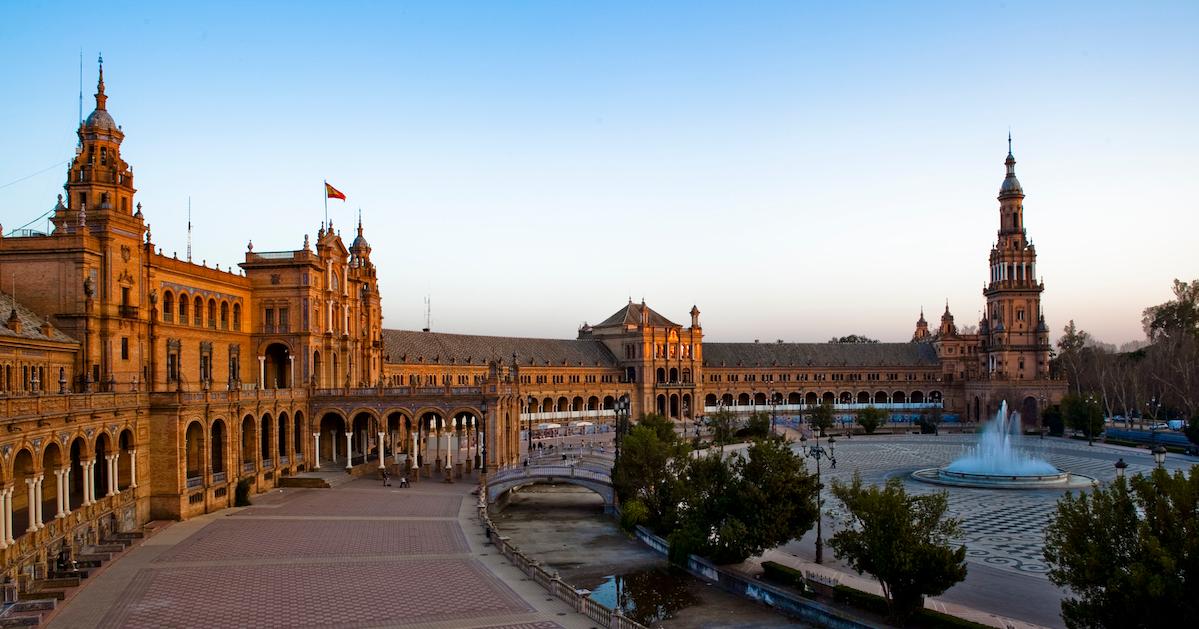It seemed so easy at first. Come up with five reasons to visit Sevilla, Spain, home to MPI’s European Meetings and Events Conference (EMEC) in February 2020.
A few years ago, after MPI’s last EMEC in Spain, I was able to spend a few days exploring Sevilla and had many fond memories, so coming up with five reasons was going to be fácil.
The more I thought about it, well, five quickly became seven. Then I ran into Manuel Macias, director of the Sevilla Congress and Convention Bureau, at IMEX America in Las Vegas last month, and was reminded of a wonderful lunch we had together at the Rincón de Bernardo restaurant in the Alcalá de Guadaíra, just outside Sevilla.
“Sevilla is such a beautiful city,” I told him. “If someone could only see three things, what would you recommend?”
Before I could say saludos, he came right back at me with a list of 10 must-see sights. I looked at his list, checked it against mine, and sure enough, seven plus three does equal 10.
So, drumroll please, here are the top 10 reasons to visit Sevilla.
- EMEC, of course. A shameless plug for MPI’s signature European education and networking event. This will be the 31st edition, held in a city that has established itself as an impressive MICE destination. “Hosting EMEC in Sevilla is a great injection of encouragement and enthusiasm for our destination,” Macias said. “The expectations that all participants can expect are beneficial in two ways—on the one hand, we are preparing a truly unique and innovative educational and experiential work program in many fields of our profession, and on the other hand, participants will discover a unique destination [known] for the beauty of its monuments, gastronomy, art, history and southern hospitality in Andalusia, as well as a variety of world-class professional resources.”
- They say “all Sevilla is a monument,” and there’s no better place to start than Plaza de España, the masterpiece of Sevilla architect Aníbal González. Built to house the Spanish Pavilion at the 1929 Ibero-American Exhibition, it is the largest square in the city. Movie buffs will recognize the location from such films as Lawrence of Arabia and Star Wars: Episode II - Attack of the Clones. The Plaza de América is nearby with a small lake, beautiful gardens and museums.
- The Sevilla Cathedral, a UNESCO World Heritage site, was completed in the early 1500s and is still considered one of the largest cathedrals in the world. One of the most popular features is the tomb of Christopher Columbus. There’s much debate as to whether his bones are really there, but a forensic team several years ago compared DNA from bone fragments from a church in the Dominican Republic that claims to have some of his bones, too. The verdict was the bones in Sevilla are his. All this only adds to the allure of a magnificent tomb held up by figures representing the four kingdoms of Spain during Columbus’ life—Castille, Aragon, Navara and Leon.
- A more recent monument—this one was opened in 2011—is the Metropol Parasol, a wooden structure at La Encarnación square. It stands about 85 feet tall and is often compared to a mushroom due to its design. This unique venue can accommodate outdoor events such as concerts. Visitors can walk on top of the structure for views of the city. There’s a museum in the basement with Roman artifacts found during construction.
- Cross the Guadalquivir River over the Isabel II bridge and you’re in the Triana neighborhood, an artsy district that was the longtime home for sailors, bullfighters and flamenco dancers. Now, it’s a feisty area with markets, shops, museums on the city’s ceramic history, churches and colorful waterfront buildings on Calle Betis.
- Real Alcazar is the oldest royal palace in continuous use in Europe. Another of Sevilla’s UNESCO World Heritage sites, it is the official residence of the king and queen of Spain when they visit the city. The complex can be toured and three cultures—Christian, Muslim and Jew—can be found within the grounds.
- Santa Cruz Quarter is the former Jewish Quarter and is considered one of the most romantic places in the city. Its narrow streets, squares and outdoor courtyards are surrounded by many of the city’s oldest churches, including the aforementioned Sevilla Cathedral. Check out the Murillo Museum, featuring the works of Bartolomé Esteban Murillo, one of the most distinguished painters to come out of the Andalusian capital. Casa de Pilatos features some of the most stunning gardens in the city.
- Torre del Oro on the Guadalquivir River is now a maritime museum, but the 13th-century tower was built to defend the city, using a thick chain extended across the river to cut off any access. It’s been restored several times and still maintains a unique dodecagonal tower.
- Flamenco is the highly expressive traditional song and dance of the gypsies of Andalucia. The flamenco is a dance characterized by hand clapping, footwork and intricate hand, arm and body movements, usually accompanied by a singer and guitar player. Must see.
- Tapas. Enough said. ¡Buen Provecho!
Visit mpi.org/events/emec to learn more about EMEC.
Photo courtesy Sevilla Congress & Convention Bureau.

